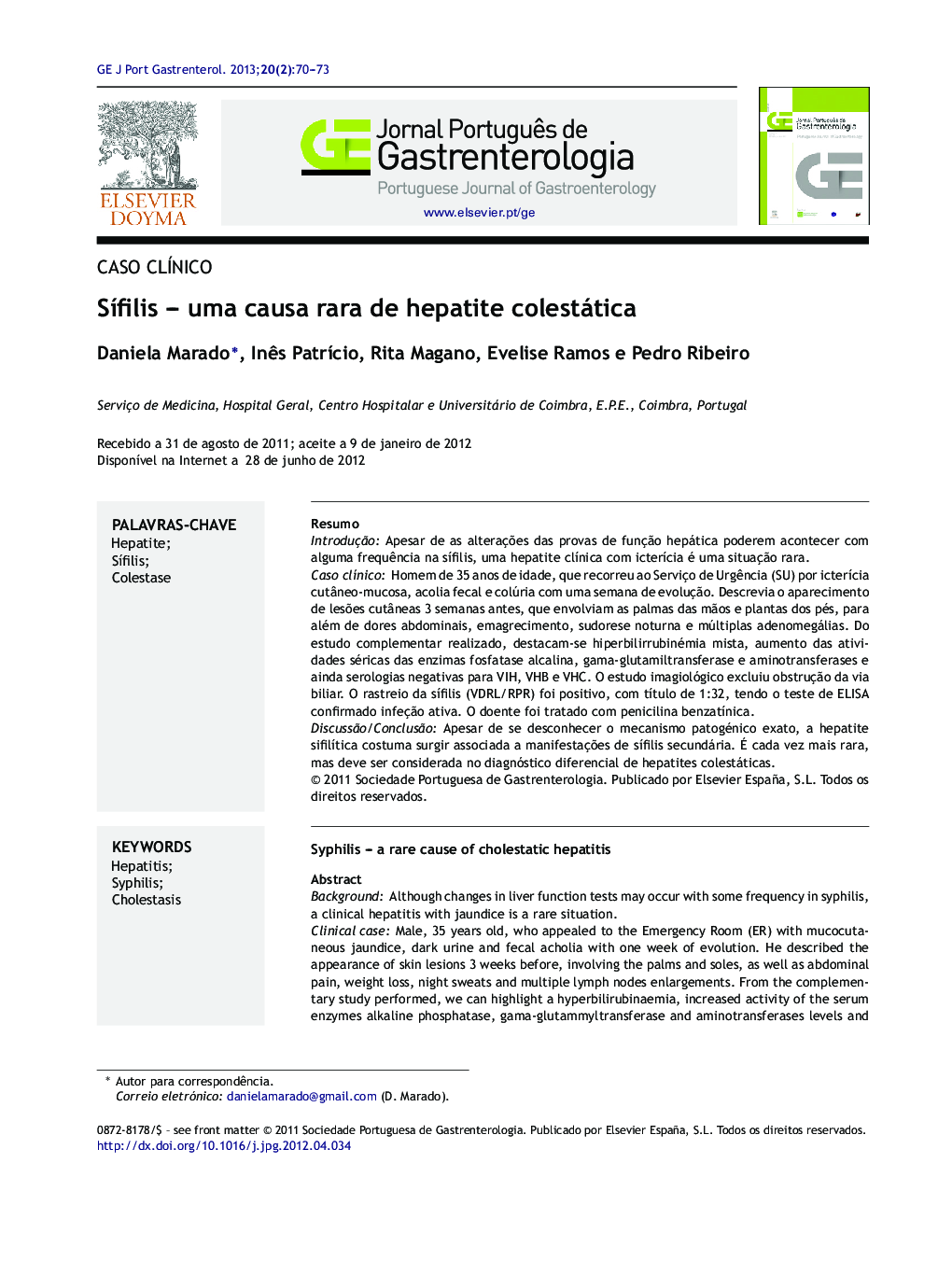| کد مقاله | کد نشریه | سال انتشار | مقاله انگلیسی | نسخه تمام متن |
|---|---|---|---|---|
| 3311118 | 1210763 | 2013 | 4 صفحه PDF | دانلود رایگان |

ResumoIntroduçãoApesar de as alterações das provas de função hepática poderem acontecer com alguma frequência na sífilis, uma hepatite clínica com icterícia é uma situação rara.Caso clínicoHomem de 35 anos de idade, que recorreu ao Serviço de Urgência (SU) por icterícia cutâneo-mucosa, acolia fecal e colúria com uma semana de evolução. Descrevia o aparecimento de lesões cutâneas 3 semanas antes, que envolviam as palmas das mãos e plantas dos pés, para além de dores abdominais, emagrecimento, sudorese noturna e múltiplas adenomegálias. Do estudo complementar realizado, destacam-se hiperbilirrubinémia mista, aumento das atividades séricas das enzimas fosfatase alcalina, gama-glutamiltransferase e aminotransferases e ainda serologias negativas para VIH, VHB e VHC. O estudo imagiológico excluiu obstrução da via biliar. O rastreio da sífilis (VDRL/RPR) foi positivo, com título de 1:32, tendo o teste de ELISA confirmado infeção ativa. O doente foi tratado com penicilina benzatínica.Discussão/ConclusãoApesar de se desconhecer o mecanismo patogénico exato, a hepatite sifilítica costuma surgir associada a manifestações de sífilis secundária. É cada vez mais rara, mas deve ser considerada no diagnóstico diferencial de hepatites colestáticas.
BackgroundAlthough changes in liver function tests may occur with some frequency in syphilis, a clinical hepatitis with jaundice is a rare situation.Clinical caseMale, 35 years old, who appealed to the Emergency Room (ER) with mucocutaneous jaundice, dark urine and fecal acholia with one week of evolution. He described the appearance of skin lesions 3 weeks before, involving the palms and soles, as well as abdominal pain, weight loss, night sweats and multiple lymph nodes enlargements. From the complementary study performed, we can highlight a hyperbilirubinaemia, increased activity of the serum enzymes alkaline phosphatase, gama-glutammyltransferase and aminotransferases levels and still negative serology for HIV, HBV and HCV. The imagiological study excluded biliary tract obstruction. Syphilis screening (VDRL/RPR) was positive, with titers of 1:32 and the ELISA assay confirmed active infection. The patient was treated with benzathine penicillin.Discussion/ConclusionThe pathogenic mechanism of syphilitic hepatitis is not currently known, but this disorder appears associated with secondary syphilis. It is extremely rare, but, nevertheless, it should be considered in the differential diagnosis of cholestatic hepatitis.
Journal: GE Jornal Português de Gastrenterologia - Volume 20, Issue 2, March–April 2013, Pages 70–73